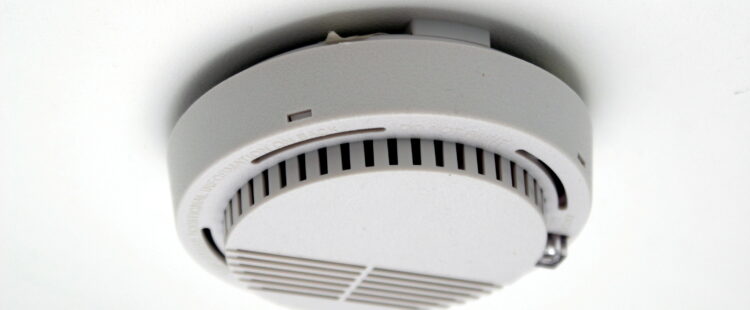Disclosure: I may earn affiliate revenue or commissions if you purchase products from links on my website. The prospect of compensation does not influence what I write about or how my posts are structured. The vast majority of articles on my website do not contain any affiliate links.
I use my stovetop heavily. Most of the time, I’m lighting the burner under my Lodge cast iron skillet. It’s been used for everything from toasting bread to smoking lobster tails. Cast iron cookware is beloved for how well it conducts heat and how, in a world of ever-more-expensive kitchen gadgets, it often results in a superior preparation.
Cast iron also has a smoking problem. More heat, more problems. Something like that. There’s a learning curve that accompanies cast iron cooking. Even after your start preparing steaks with respectable consistency, you’ll probably still be struggling to control the smoke your pan produces. Or, you’ll simply learn to tolerate it.
I’ve spent so many years with my cast iron–often enclosed in a small apartment–that I’ve made a conscious effort to understand and reduce the ill effects of high heat cooking. Consistent smoke inhalation isn’t just annoying, it can ruin your furniture, irritate your pets, and can even cause cancer. There’s a dearth of in-depth articles out there yet plenty of people wish they had a better solution to the problem.
Here is my guide to reducing smoke from high-heat cooking.
Understand Your Kitchen Appliances
The Range
One subtle difference that you won’t notice, even if you move between apartments annually, is that different gas ranges can have drastically different max BTU ratings. Also, though most vents are attached to microwaves and are absolutely awful, some have carbon filters. Some have surprisingly powerful uptakes, but the equation to estimate proper uptake is usually ignored by those who design apartments.
It’s important to have some concept of BTUs beyond “this is the big burner” and “this is the small burner.” When I first started cooking in my current apartment, I was encountering more smoke than usual. Eventually, I realized that the burner I was cranking up to the max setting was 18,000 BTUs! Providing this type of power in a highrise apartment without a vent hood is like… I don’t know, imagine a simile involving automatic weaponry and unmitigated carnage.
The average BTU rating on a 4-burner stove is going to be right around 7,000. My guidance here is that pumping out 7, 8, even 9,000 BTU on full blast is viable, but anything more than that, you had better have a fantastic vent. Most likely, you don’t have a fantastic vent. My 18,000 BTU burner performs extremely well when the knob is turned 6/10 of the way. Anything more than that is excessive.
The Vent
If you live in an apartment building, even a luxury apartment building, there’s a great chance that whoever built or renovated the space cheaped out on ventilation. Most fans on the bottom of microwaves won’t do anything except redirect the air through a small filter. The rare vent hood will probably be underpowered for a stovetop producing thick smoke.
The general rule of thumb is that your vent (with a duct) should be able to replace the air in the room every five minutes, something like that. It’s not worth explaining more precisely because if you’re on the internet searching for ways to reduce smoke, replacing your vent hood is probably the last thing you want to do.
If you have a microwave with a vent fan, I highly recommend installing some non-duct carbon filters. You can install these behind the greasy grates under your microwave–even though they’re built for a specific model they fit pretty well into most models. They make a difference, but nothing dramatic.
Where is the Smoke Coming From?
Cooking Oils and Smoke Points
Generally, one of the first lessons you’ll learn when cooking using high-heat methods is that butter and olive oil ignite quickly. They have two of the lowest smoke points. The smoke point is the temperature at which an oil, well, starts smoking. We want to avoid this whenever possible.
This Wikipedia article contains the smoke points of all cooking oils.
To summarize, butter comes in at right around 300 °F. Olive oil isn’t much better, starting at 320 °F. However, olive oil doesn’t make the best example because some of those premium brands that cost $30 at Whole Foods actually have much higher smoke points. Over the years, I’ve experimented quite a bit. At the extremes of the smoke point scale, the cost, taste, and nutritional value of the oil are paramount. I recommend neutral-tasting sunflower and safflower oil. But, when looking to impart flavor, I’ve dabbled with pecan oil, peanut oil, avocado oil–the list goes on.
If you don’t own any oils aside from olive oil, I recommend moving to peanut oil, as, though it doesn’t have a neutral taste, it is the most common oil (aside from vegetable oil) that you could find at grocery stores. It’s popular for frying and it’s what I use to fry things.
Keeping Things Clean
This might be obvious to some people, but when you’re cooking with high heat, it’s easy to make mistakes between meals that affect how much smoke is produced. For one thing, if you do use olive oil or butter, like I use when I toast my morning bagel, you must clean your cooking surface thoroughly between uses. Whenever I slack on cleaning, my afternoon steak is usually a smoky mess.
Further, it’s important to scrape any ashy or gunky substances out of your pan using something metal. Whenever I don’t do this, I can always smell it within two minutes of starting the burner up. Sometimes people think that just because cast iron is “seasoned” that it doesn’t need to be cleaned regularly. I would clarify that even things like little specks of pepper will get burned when you cook using cast iron, so there’s almost always something that needs to be cleaned up.
Change Your Cooking Method
Ultimately, we’re trying to avoid drastic changes. Some things still need to be mentioned.
Put a Lid on It
If you don’t have a lid for your skillet, you need one. Not only will it help cook things faster, it’ll result in better control over the smoke you do produce. I recommend the run-of-the-mill tempered glass Lodge lid. The cast-iron lid is another choice that will result in better cooking, however, it’s a total mess to handle once it gets a little grease on it. I have a smaller dutch oven with one of these lids and it’s grimey all the time. Even right now. Anyway, this has nothing to do with smoke reduction.
Put it in the Oven
After a certain point of searing, cast iron produces excess smoke while cooking in a sub-optimal way, compared to an oven. Yeah, this is true. If you feel like pre-heating an oven and occasionally cleaning an oven, then it makes sense to stick the pan in there, whether you’re searing or reverse searing or just trying to cut down on smoke.
Use a Grill
I’m being facetious at this point. The solution to indoor smoke isn’t to use an outdoor grill. That’s like saying the solution to a flat tire is to catch a ride in a helicopter.
You’ve Reduced the Smoke, but It’s Still Too Smoky
This is the point at which most home chefs converge. Buying a new vent hood isn’t feasible, you ditched olive oil months ago, do you need to spend hours every day standing in the middle of a smokescreen?
Take Advantage of Air Pressure and Backdrafts
Especially if you live in a highrise building, this will be your saving grace. Simply, open the window in your apartment closest to your kitchen, then prop open the door to your apartment with a shoe or something. In every apartment that I’ve lived in, taking these steps will result in a powerful air current.
This is the single most effective solution and it costs nothing. Of course, it won’t work for everybody and it comes at some cost. The temperature in your apartment will be difficult to control. Depending on the direction of airflow, those near your apartment might not like being exposed to the smell of your cooking. This creates a minor privacy issue. I have had at least one unleashed dog and owner barge into my apartment while my unit was unlocked. That was pretty awkward, but the owner definitely respected what I was cooking up.
Adjusting Airflow
Even if you do have a useable backdraft, you still might want to harness the airflow and adjust it a bit.
On my end, I don’t want any air to get into my bedroom. I don’t want to open my bedroom door to the preserved scent of the steak I cooked four hours earlier.
The first thing I started to use was a heavy-duty door draft stopper. Overnight, I place this in front of my apartment door to help restrict airflow and minimize sound. It’s most useful during the day when I place it in front of my bedroom door. I find that it genuinely does mitigate smoke entering my bedroom. It’s not perfect, but it’s a premium product that I’ve been really happy with.
Next, fans! Don’t buy a plastic fan. I highly recommend the 20″ Lasko Fan. I own two of them, and at times I’ve utilized both to adjust airflow while cooking. They’re loud and borderline industrial, but they work phenomenally. I’ve also used them for white noise while sleeping and I use them extensively while exercising. You probably don’t want to purchase a full-sized barrel fan for your apartment, this fan is going to get the job done, whatever the job is.
Passive Deodorizers
Anything without a motor is not going to be able to filter the smoke in your kitchen. However, there are two decent options depending on the layout of your living space.
The first might be kind of obvious–buy houseplants! This is almost never discussed. Having plants near your kitchen or in your kitchen can make a big difference in freshening the air and even mitigating smoke at the time of cooking, if you go crazy with it. Personally, I move around a lot and plants are difficult to move, so I don’t have many. If I owned the space that I lived in, I would practically have a greenhouse inside. I’m not talking about putting a huge plant on your valuable countertop, but don’t discount this option.
The other option is the trendy charcoal air-purifier bags. Clinically, they’ve been proven to work. In my experience, they just collect dust in the corners of my apartment. I used to have one on my countertop and didn’t feel it make and difference. If you went absolutely crazy with these purifiers, I’m sure your air would be cleaner, but they’d be no match for a smoking-hot pan.
DIY Ductwork
This idea is on an extreme of the craziness spectrum. In the past, I was able to rig together a proof-of-concept that worked surprisingly well. Custom ductwork is an effective yet extremely unsightly and cumbersome solution to not being able to replace your vent hood.
When I say DIY Ductwork, I mean that you literally will be placing an open-air duct on your countertop next to your stove and then connecting it to high-powered fans or vacuums which (hopefully) vent to an open window. You will be assembling this on-demand based on the layout of your apartment and the usage of the kitchen.
To accomplish this, you’ll need to buy ducting. Then you’ll need a fan or blower. You could acquire a duct fan that is meant to fit the diameter of the duct. You could also hack together a mount using a fan that drives air through the duct. In any case, this is the one solution that I’d have to say I felt absolutely ridiculous for trying to assemble. Even if you get it perfectly, one side of your stove will vent significantly better than the other side.
Air Purifiers
I’ve dabbled in this realm as well. Air purifiers are a modular solution that is guaranteed to reduce smoke and clean the air in a confined space.
Mini Outlet Purifiers
I bought a substantial-looking outlet air purifier about a year ago. It doesn’t have a charcoal filter, it just sucks air in and zaps it using one of those UV light bulbs. These things get surprisingly good reviews but mine was ineffective for active cooking situations. It was placed right next to my stove and pretty much just got really greasy. I no longer use it.
Large Air Purifiers
Here’s where things get really interesting. Large air purifiers are similar to vent hoods in that they recycle all of the air in your apartment over whatever time period. They use a fair amount of power and need frequent cleaning and filter replacements.
About a year ago, a friend gifted me a Medify Air Air Purifier (long story). Generally speaking, it works really well. There’s no black magic. There is a sterile, fresh scent to the air in my home when I run this thing. I am a fairly suspicious person, so I even would set up blind tests where I’d try to determine whether the purifier was running or not. Bedroom, bathroom, or kitchen, its effectiveness is obvious.
But what happens when kitchen smoke is billowing through it? It holds up well. But, as you might imagine, it isn’t some crazy solution where I can see the air visually being cleaned, like in those old Sharper Image infomercials. I use it in tandem with my other methods and it makes a difference. However–with heavy usage comes a cost. The air purifier gets covered in grease when it spends time in close proximity to my stovetop. Further, I find that kitchen smells will “linger” with it even as I move it back to my bedroom at night. When I was using it in the kitchen and then moving it back to the bedroom at night, I was noticing that it produced air with a faint smokey, beefy odor. I’m sure that this would eventually happen to any air purifier, but it’s the only thing that’s tempered my satisfaction here. Technology in this space has come a long way.
Summary
Through my venture into cast iron cooking, I’ve experimented with many ways of mitigating smoke. At the end of the day, this guide isn’t for cast-iron purists, it’s for anyone looking to reduce smoke in the kitchen. I’ve been in the trenches. I’ve bought products, I’ve assembled ridiculous solutions, I’ve inhaled more noxious smoke than I’d care to admit. I have reached a level of comfort and equilibrium in my kitchen. So regardless of whether you can take the heat or not, my hope is that you won’t have to deal with the smoke.



